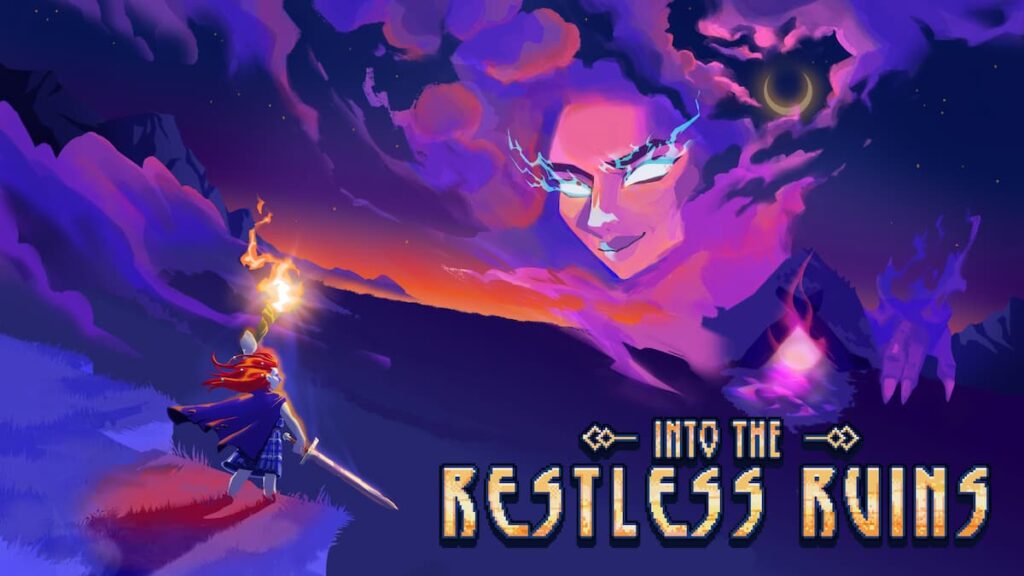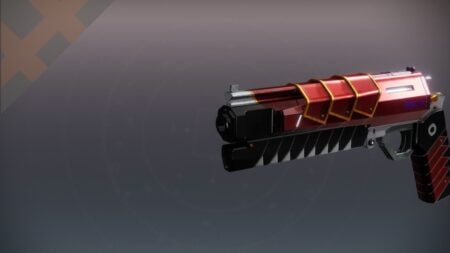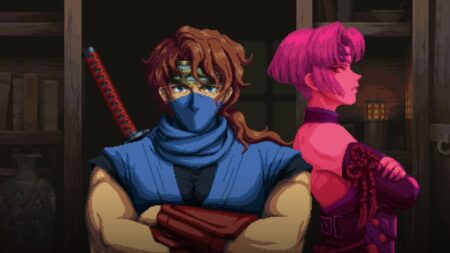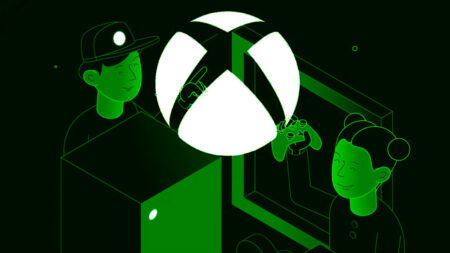There’s nothing quite like a fiendishly addictive roguelike deckbuilder, especially when it gets its claws in you. While we’ve been blessed with a handful of excellent examples in the sub-genre — from Slay the Spire to Monster Train to Luck Be a Landlord — a brand new contestant has entered the chat: Ant Workshop’s Into the Restless Ruins.
Blending the deckbuilding of Slay the Spire with the RPG progression of Loop Hero, along with some liberal spoonfuls of Tetris‘s puzzling mechanics and Vampire Survivors’ moment-to-moment gameplay, Into the Restless Ruins is a terrific genre mishmash that truly delves into unknown territory.
Not only does it exercise your brain in a completely different way to those aforementioned hits, but it also delivers an incredibly deep and rewarding deckbuilding experience that is equally unique as it is stylish. Its main draw in a nutshell? Instead of traversing randomly generated dungeons, you as the player, get to design the dungeon yourself. Pretty neat, no?
Luckily, we had the opportunity to sit down and virtually chew the fat with the Edinburgh-based developer’s Managing Director, Tony Gowland, about the process of developing his snazzy new roguelike, working with a large publisher like Wales Interactive, and a little bit about what makes deckbuilders special. So, without further ado, let’s dive in, shall we?
Into the Restless Ruins Interview With Ant Workshop’s Managing Director Tony Gowland
Dylan Chaundy, Editor at The Nerd Stash: From what I can gather, you and your team at Ant Workshop has self published many of your own games in the past. Is this the first time that you’ve worked with a larger publisher like Wales Interactive? What’s your experience been like working with a larger publisher?
Tony Gowland, Managing Director at Ant Workshop: Yeah, with our last few games we decided to self publish and handle all of the marketing and outreach and that kind of thing ourselves with the help of some agencies here and there. What we found there was that there is a lot of knowledge we simply don’t have, that really you can only gain by releasing games frequently. When we got a bit of the way through development on Restless Ruins and realised how cool it is, we wanted to partner up with someone to help us get the word out and give the game its best shot!
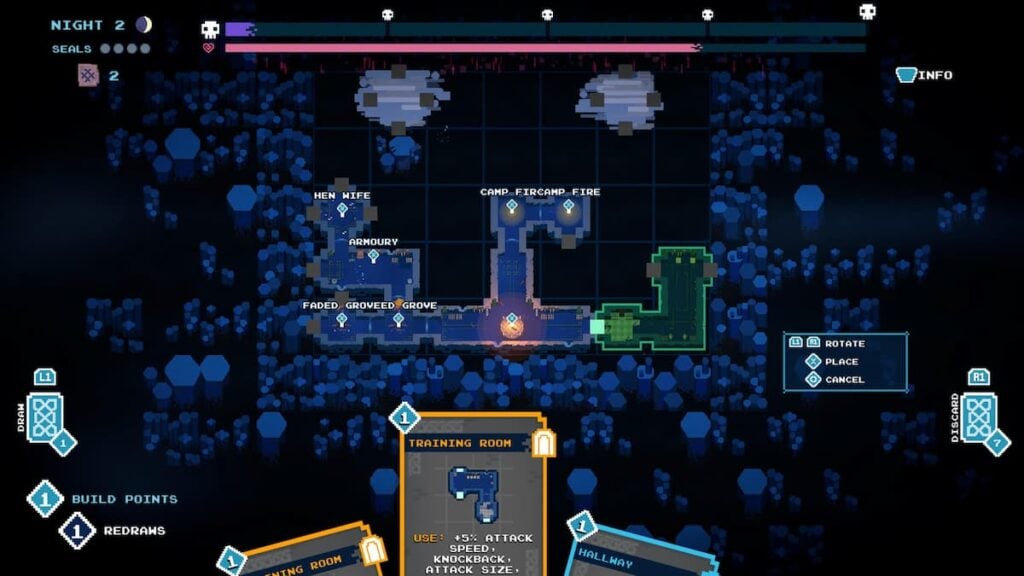
Wales Interactive have been great to work with. Our favourite publishers to work with are mid-sized teams where you really get to know everyone who’s on the other side of the chat and can bounce ideas off each other.
Dylan: Compared to some of your previous games, Into the Restless Ruins feels like a far more ambitious project. How has development on the game been going? Did you need much support, or was it all handled internally by the team at Ant Workshop?
Tony: I think it’s ambitious in some ways, but deliberately way tighter in others. So, for example, a couple of years ago we made Dungeon Golf, which had online multiplayer, 54 holes of golf to design, 8 player characters all animated with 2 special modes each, loads of monsters, obstacles, etc. It was a really big undertaking for us. Possibly too much, really.
So immediately after that we decided we were going to make games that were kinda smaller in terms of the amount of complicated “stuff”, but where every feature could multiply together to make much deeper gameplay. Oh, and also in 2d and single player! That’s how we’ve been able to develop Restless Ruins in a year with a core team of just three of us. It helps that we’ve made a bunch of games before, of course, so we’ve been able to reuse a load of boring things for those (menu systems, or stuff that shows the right button prompts – the really dull bits of game development that need to be done).
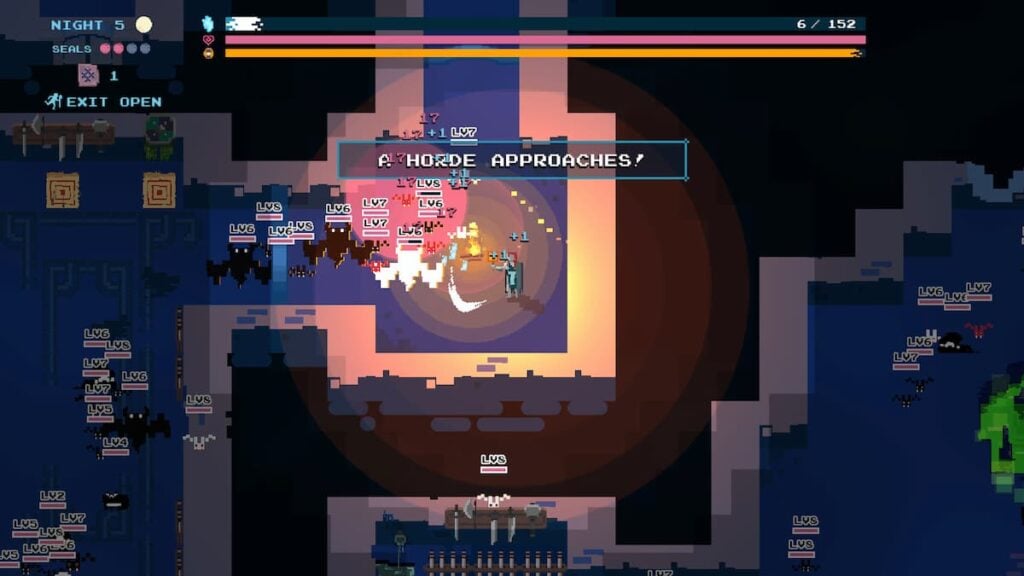
The only other major thing we outsourced has been the soundtrack. To fit in with the kind of “modern retro” art style and the horror-lite vibes we really wanted to have a synthwave soundtrack! You know, like the kind of thing John Carpenter movies had in the 80’s (or that Stranger Things does now!) We got really lucky with Russel Nash in finding a Scottish synthwave artist who was available (and props to any of your readers who recognise where his recording name comes from).
Dylan: From what I’ve played so far, Into the Restless Ruins is a wonderful blend of Slay the Spire, Loop Hero, Tetris, and Vampire Survivors. Were there any other games or pieces of media that helped to influence and shape the world and gameplay of Restless Ruins?
Tony: I think you’ve hit on all of the main inspirations we had, but there are almost certainly bits and bobs from other games. I play a lot of Survivors-likes and I really enjoy that (almost) every game in the genre has the same core but then brings a different meta-progression, or upgrade system, or something else to keep it fresh. For example, there’s one room in Restless Ruins that rewards you for harvesting a certain number of enemies while you’re in it, which I think I first saw in Nordic Ashes (or maybe Halls of Torment? After a while I forget which game has which thing!)
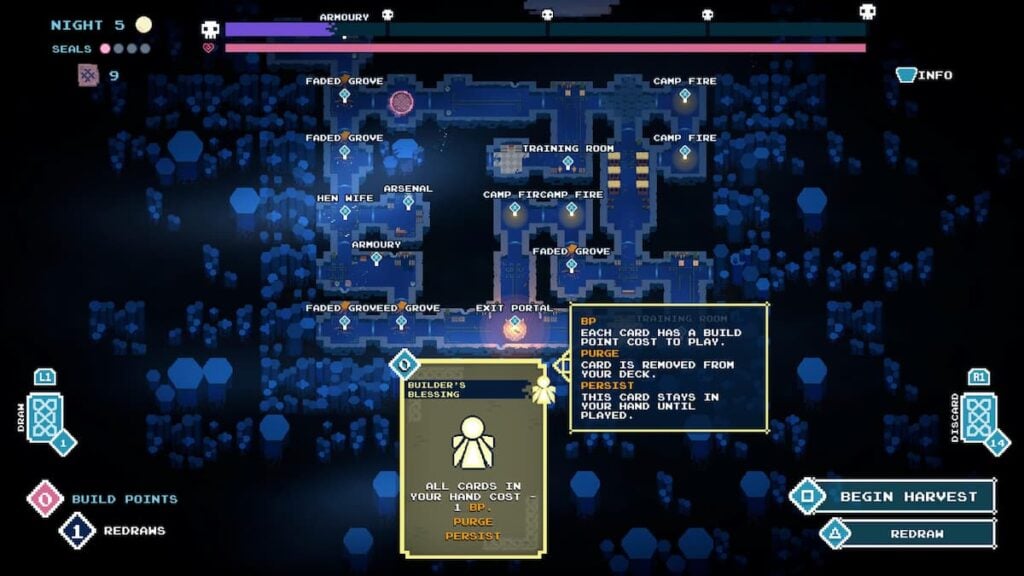
The folklore and vibes all come from diving in to a dozen or so books on Scottish folklore, once we decided that was the direction we wanted to go in. Despite being a developer from Scotland, there aren’t huge amounts of resources out there – and it’s not like Norse or Greek mythology where it’s been done and repeated over hundreds of movies, TV shows, book series, and games. Although the plus side of that was that we could spin our own take that was authentic but still felt fresh in a way that Yet Another Thing About Greek Gods wouldn’t.
Dylan: Managing to nail that “Just One More Run” feeling can be a tall order, though progression systems definitely help to hook players in and keep them invested. What was the biggest challenge when it comes nailing that “Just One More Run” feel?
Tony: For a long time we weren’t entirely sure how to balance the game, both in terms of difficulty but also progression. As deckbuilder players ourselves we’ve very aware that for a lot of the player base, they don’t want persistent meta-progression – unlike Survivor-players who kind of expect that after a few runs they will be able to buy “Starting Health +5%” and get a wee bit further in a run.
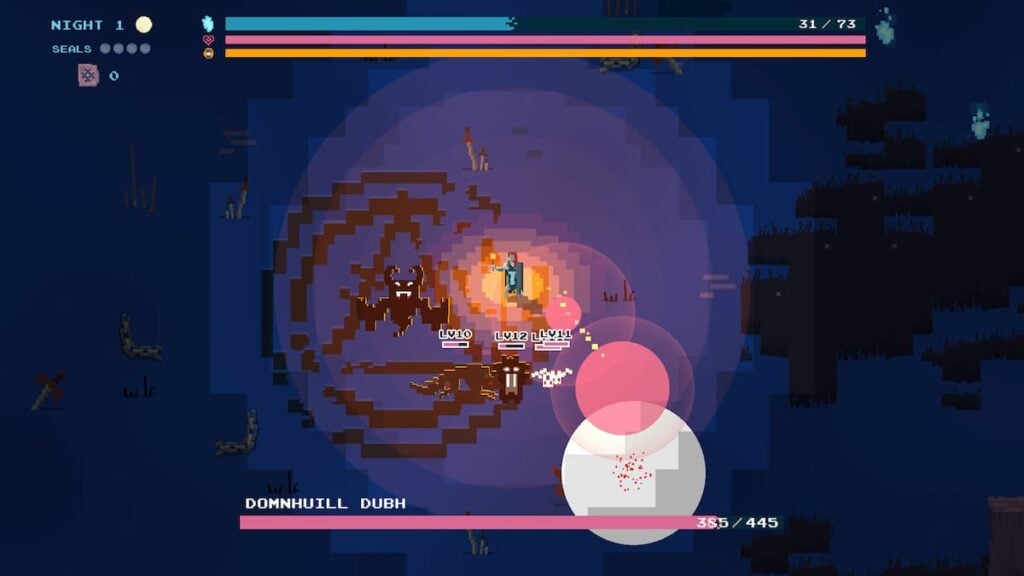
So we had a lot of back and forth on different designs for how to get that satisfying progression, in a way that would feel good to both camps, and I think the Cantrips and Dread system does that. Essentially, through play you gradually unlock permanent run modifiers – things like “enemy starting level +5”, but also some that make the game easier (“Corruption bar is longer”), or that change the fundamental rules (“each turn you draw your entire deck). On starting a new run you can pick which of these you want to have active, and each one adjusts your score multiplier, depending on if it’s making the game easier or harder. Your score after each run is directly translated in to XP that gradually unlocks new cards, features, and other things, in to the random drop pool.
So deckbuilder purists can choose not to activate any Cantrips, and play each run the same as day 1, but folks who want to can create their own custom difficulty level.
Dylan: Deckbuilders and roguelikes are fast becoming one of the indie scene’s more popular, up-and-coming sub-genres. What is it about deckbuilders and roguelikes that really speaks to you?
Tony: Yeah, there are certainly a lot of them these days, and hopefully Restless Ruins is bringing enough new stuff to the table that folks check it out (we’ve certainly not seen anything that’s doing this combination of things, and like I say we do play quite a lot!)
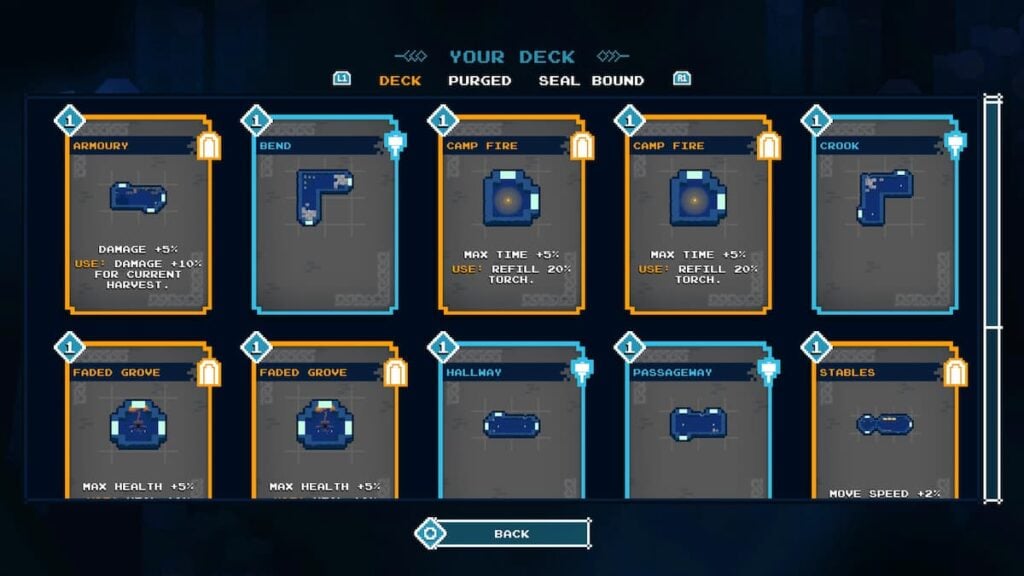
I can only speak for myself, but I imagine it’s similar with other developers, that roguelikes are a really nice structure of game to design and build. Rather than making lots and lots of totally bespoke levels or encounters, you’re instead thinking about what systems could gel together to make interesting gameplay combinations in a more emergent kinda way. Especially for smaller dev teams, it’s a much more sensible way of making deep games that give a lot of play time for their cost, but that also give players a lot of scope for learning and advancing their own knowledge of the game to master it.
Dylan: When I first played Restless Ruins, I thought that getting to the boss as quickly as possible would be a good strategy. However, the more I play, the more I realise that it’s far more important to build up your dungeon/path so that you can take advantage of all the different buffs to help against your fight with the level’s boss, aka the Warden. What is an effective strategy that you’d recommend to beginners?
Tony: Ha, yeah, that’s a fairly common preconception, and to be fair with the tutorial level it’s not entirely a bad plan. But as soon as the second level you’re going to have to be thinking more tactically about the layout. The main thing is to not rush – although the Corruption bar is always ticking up, you have quite a lot of nights to achieve your goal.
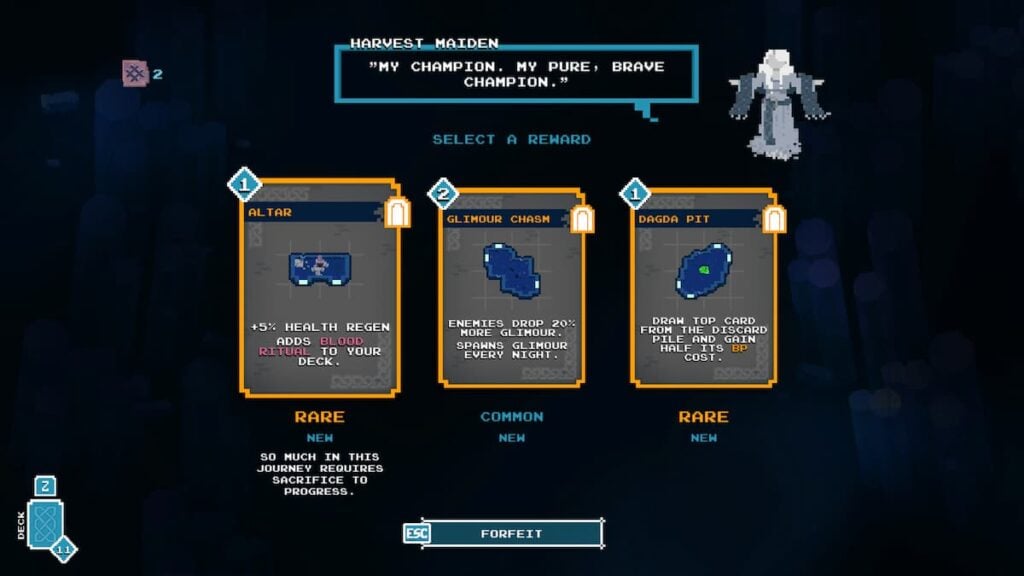
The most important thing with building the level is to keep it memorable. Plan little landmarks for yourself (and we even give you some rooms, like the signpost, specifically for this) that will help you find your way around when the light starts to fade. A couple of things I will do are placing a memorable room (such as the Library) only a few times, or create little patterns of rooms (“oh here’s the T shape of Faded Groves I made”).
And always try and leave some space back near the start area to place a Portal in case you receive one later in the run!
Dylan: What is your favorite card in Restless Ruins, and why?
Tony: I have a few I will always pick if they’re offered (Workshop, Iron Forge, Graveyard) just because they expand the amount of building you’re able to do each night, especially if you synergise them with a good chain.
But in terms of raw favourite card, it’s got to be Crow Wood. It looks cool, it’s got a nice reward, and if you over-use it you get absolutely beasted by a flock of angry crows. It’s kind of the perfect combination of Restless Ruins‘ gameplay and vibes!
Dylan: As an indie studio, how do you feel about the state of the gaming industry in 2025? Do you feel like there’s still room for indies to thrive?
Tony: It’s a tough time for sure, and it’s really disheartening to see what’s going on month after month – heck as I write this now EA have just announced more layoffs.
I think there is still plenty of room for indies to thrive, but the industry from top to bottom needs to be smarter about development, without that impacting the quality of the games. There are great things being made by small and mid-sized teams, and with smaller budgets I think we would see a lot more weird, quirky, and inventive stuff being made because there wouldn’t be the risk of “we’re spending $5 million on this so we need to sell a whole load of copies!” I think if anything, indies are in a better position to thrive than bigger companies, because of just that.
We’d like to extend a big thank you to Tony for taking the time out of his schedule to conduct this interview.
Into the Restless Ruins launches on PC, PlayStation 5, Xbox Series X|S, and Nintendo Switch on May 15, 2025. A playable demo is now available on Xbox, PlayStation, and Steam.

